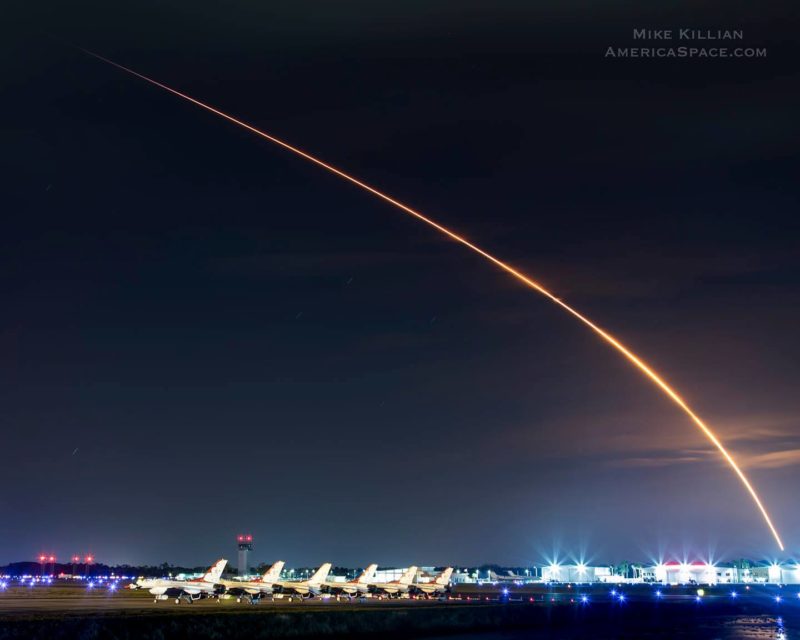
SpaceX has delivered another 60-strong batch of Starlink internet communications satellites into low-Earth orbit, following Monday night’s successful launch of a seasoned Falcon 9 booster from Space Launch Complex (SLC)-40 at Cape Canaveral Space Force Station, Fla. Liftoff of the B1059 core—which became only the third Falcon 9 first stage to record a sixth mission—occurred on time at 10:59 p.m. EST, during an “instantaneous” window.
And although first-stage flight proceeded without apparent incident, as did the second-stage ascent and deployment of its payload, B1059 failed to achieve a landing on the deck of the Autonomous Spaceport Drone Ship (ASDS), “Of Course I Still Love You”.
It remains to be seen how this anomaly will impact the next scheduled Falcon 9 launch, which at the time of writing remains targeted for 12:55 a.m. EST Wednesday morning.
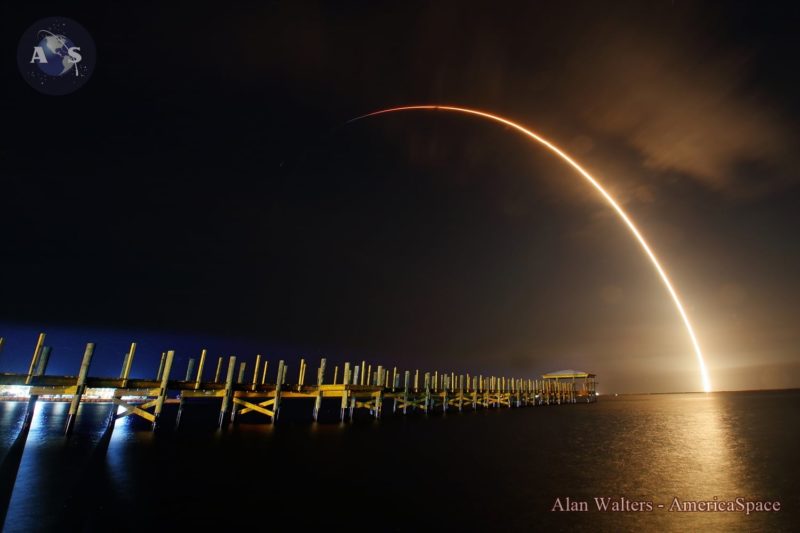
It was a sad end for a booster which has flown no fewer than six times in a little over 14 months and, in so doing, closes its career as the third-most-flown member of SpaceX’s fleet to date. B1059 first entered active operational service to deliver a pair of Dragon cargo missions to the International Space Station (ISS) on 5 December 2019 and again on 6 March 2020.
These two flights marked the final pair of station-bound flights under the terms of the first-phase Commercial Resupply Services (CRS1) contract with NASA, originally signed way back in December 2008. Between them, they delivered over 11,600 pounds (5,200 kg) of pressurized and unpressurized payloads, equipment and supplies to the station’s incumbent Expedition 61 and 62 crews.
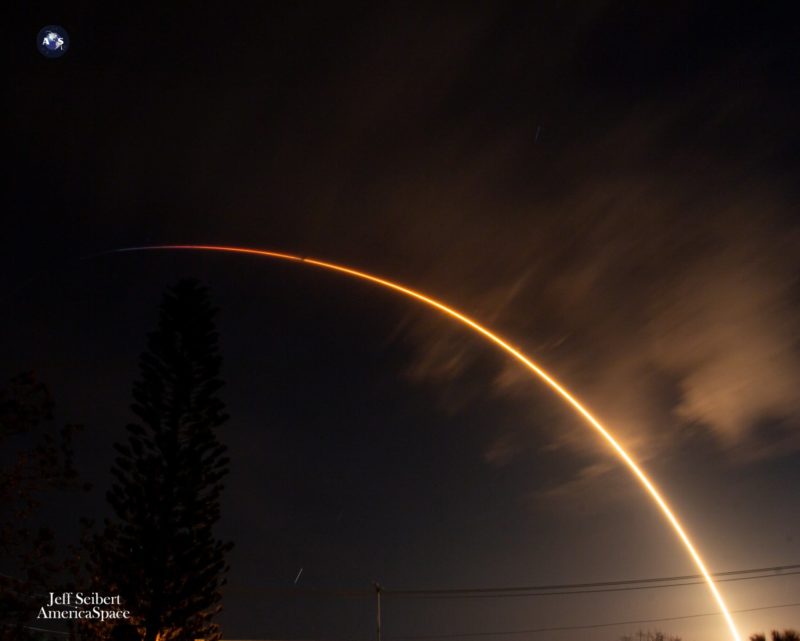
These payloads included experiments in combustion science, muscle loss, barley malting and foam-pellet manufacturing for Adidas performance midsoles.
They also featured Japan’s Hyperspectral Imager Suite (HISUI) for emplacement onto the Exposed Facility (EF) of the Kibo lab and Europe’s Bartolomeo payloads-anchoring platform, whose installation onto the hull of the Columbus lab was effected by spacewalking astronauts last month.
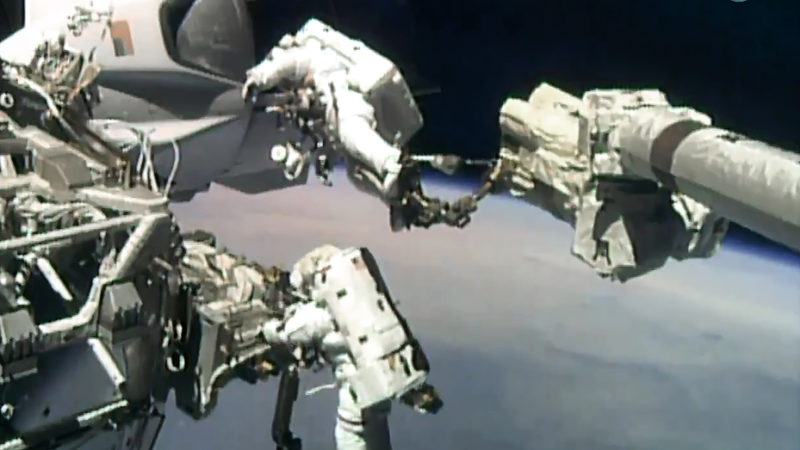
Both of these launches were preceded by Static Fire Tests, but B1059’s third launch on 13 June 2020 represented the first Falcon 9 to fly without having been put through this pre-flight ritual, seen as an indicator of the system’s growing maturity.
This mission also boasted previously-flown payload fairing “halves” and carried 58 Starlink internet communications satellites and three SkySat Earth-imaging satellites, provided by San Francisco, Calif.-headquartered Planet Labs, Inc. The launch was notable in that the 45th Weather Squadron team overseeing the flight was an all-female affair for the first time.
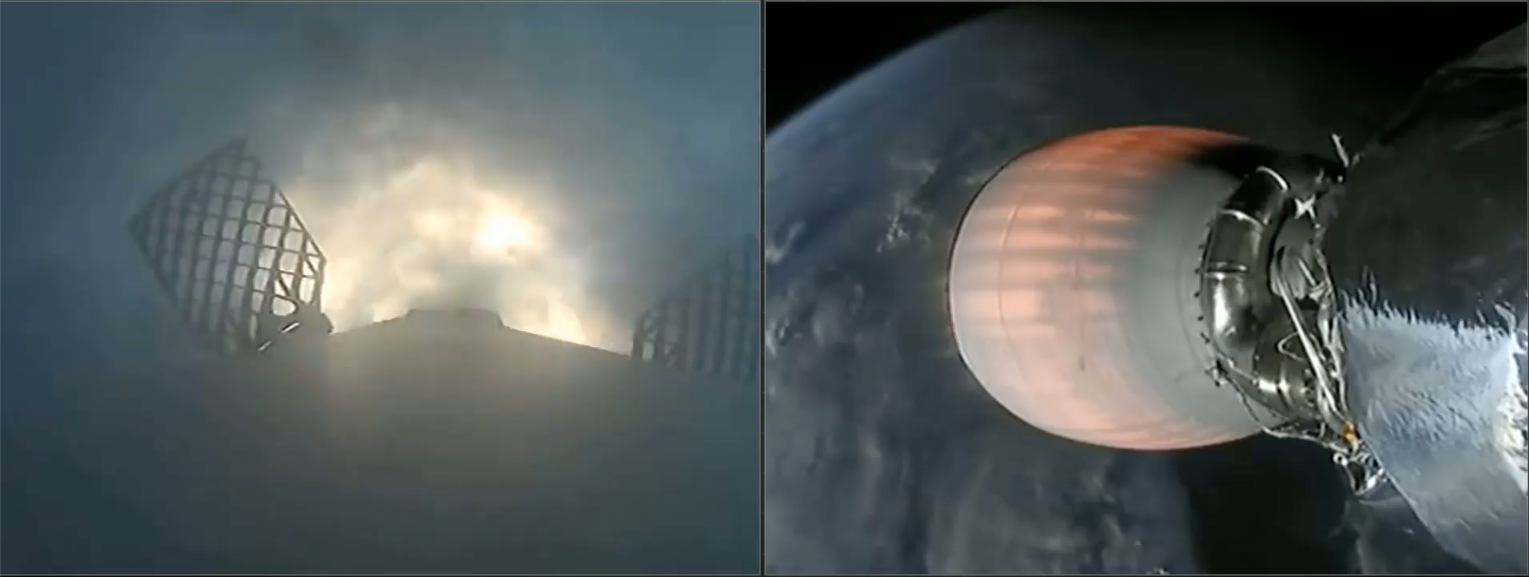
A fourth flight on 30 August—SpaceX’s 100th—was originally intended to form part of a record-setting “double-header” weekend, with two missions set to fly only nine hours apart. But although B1059 successfully roared aloft with Argentina’s SAOCOM-1B radar-imaging satellite and a pair of “rideshare” payloads, the other mission was postponed due to a steadily worsening weather outlook.
Still, B1059’s fourth foray marked the first polar-orbiting mission from the Space Coast since February 1969, as well as the first time that a Static Fire Test had not been performed prior to the launch of a major commercial customer. And with the other mission launching successfully only 3.5 days later, B1059 also played its part in securing a record for the shortest interval between any two Falcon 9 flights.
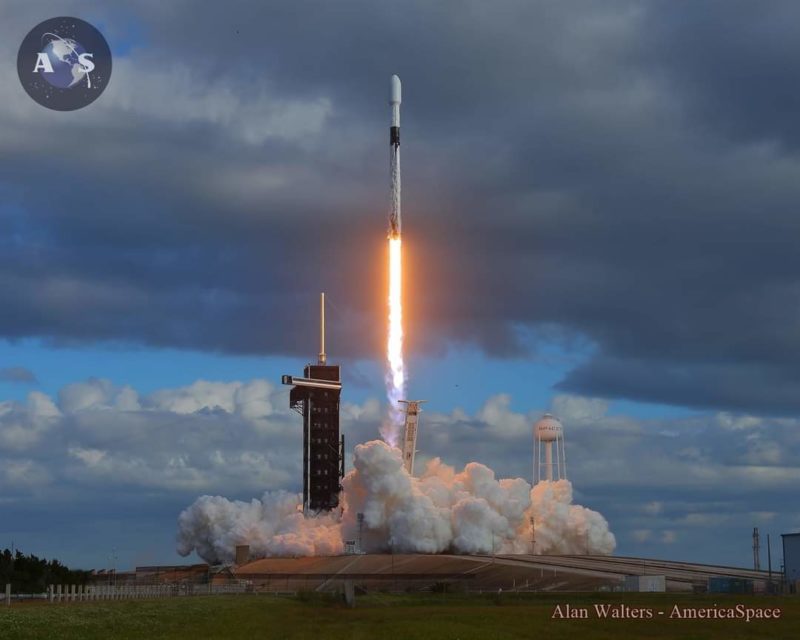
More recently, last 19 December, B1059 became only the fourth Falcon 9 booster to log a fifth launch when she delivered the highly secretive NROL-108 payload to orbit on behalf of the National Reconnaissance Office. Although this marked the fourth national security payload to be lofted by SpaceX, it was the first time in history that it had been attempted aboard a previously-flown Falcon 9 core.
With five missions thus under her belt, the blackened and scorched B1059 core and a sparkling-new second stage were rolled out to SLC-40 last Friday and—for the first time since last March—were put through a Static Fire Test.
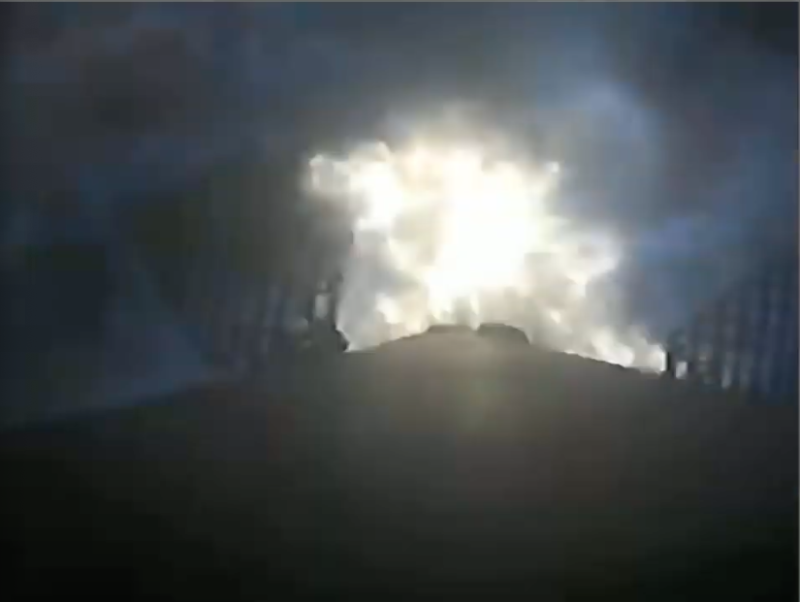
Launch was initially targeted for late Sunday night, but due to unfavorable recovery weather, SpaceX elected to postpone until 10:59 p.m. EST Monday, where conditions were expected to improve from just 40-percent-favorable to a more palatable 60-percent-favorable, following the stall of a frontal boundary over North Florida which kept the Cape wet, stormy and unseasonably warm.
By late Monday, however, a low-pressure area in the Gulf of Mexico was projected to pull the boundary to the north of the Spaceport and effect a brightened outlook. And precisely on time at 10:59 p.m. EST, B1059 took flight, its nine Merlin 1D+ first-stage engines punching out 1.5 million pounds (680,000 kg) of thrust to get the sixth Falcon 9 mission of 2021 airborne.
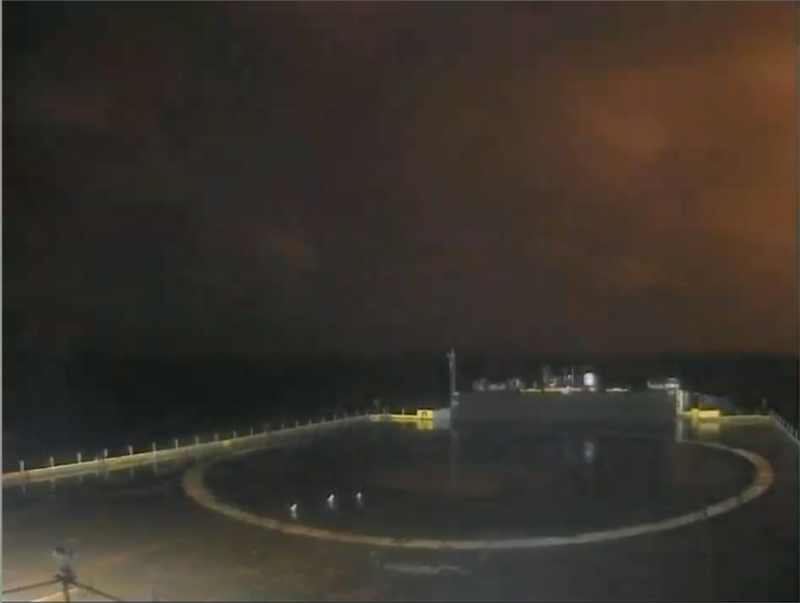
First-stage flight appeared to proceed nominally and, after separation, B1059 commenced its descent “burns” as it took aim on the ASDS, “Of Course I Still Love You”, situated some 390 miles (630 km) offshore in the Atlantic Ocean.
But landing did not come. “Looks like booster missed today,” noted AmericaSpace’s Launch Tracker at 11:12 p.m. “As the T+8:40-minute mark passed, a glow showed on the screen disturbed the seagulls on the ASDS, but did not land on the ship.”
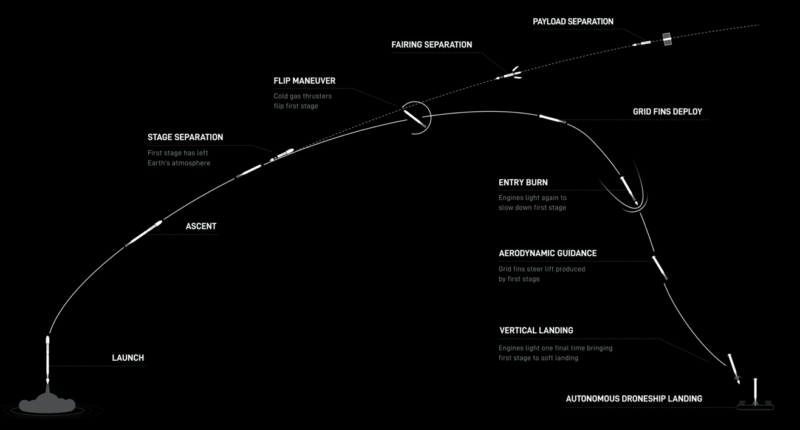
It was the first time that SpaceX had failed to land a booster in the last 24 attempts. Last spring, two Falcon 9s missed the drone ship, due to the provision of incorrect wind-speed data and residual cleaning fluid trapped in a sensor. And the loss of B1059 carries particular resonance, as it has set a number of landing milestones on its previous flights.
On its first mission in December 2019 it achieved SpaceX’s 20th successful ASDS touchdown and on its fourth flight in August 2020 it made the 20th successful solid-ground landing. And in March 2020 it recorded the 50th overall landing of a Falcon-class vehicle—inclusive of drone-ship or solid-ground touchdowns—and last December it logged the 70th time that a SpaceX bird had been successfully recovered intact.
FOLLOW AmericaSpace on Facebook and Twitter!
Missions » Commercial Space » Starlink »



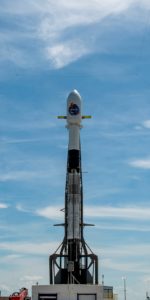
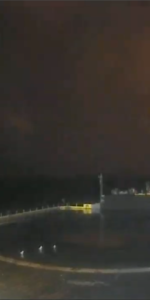
One Comment
One Ping
Pingback:SpaceX Launches Starlink-17, Lands Now 8x-Flown Rocket